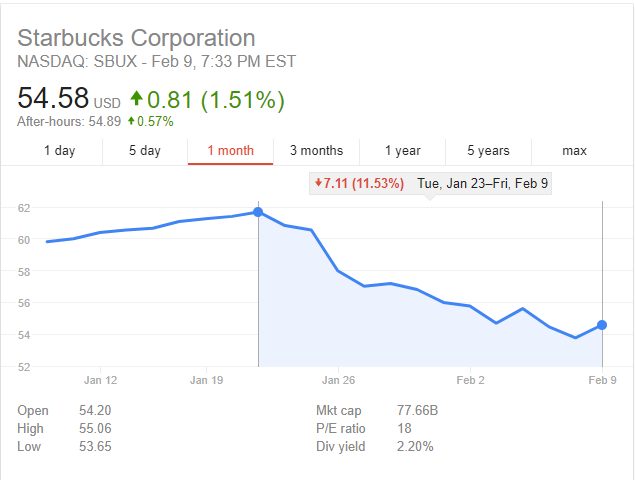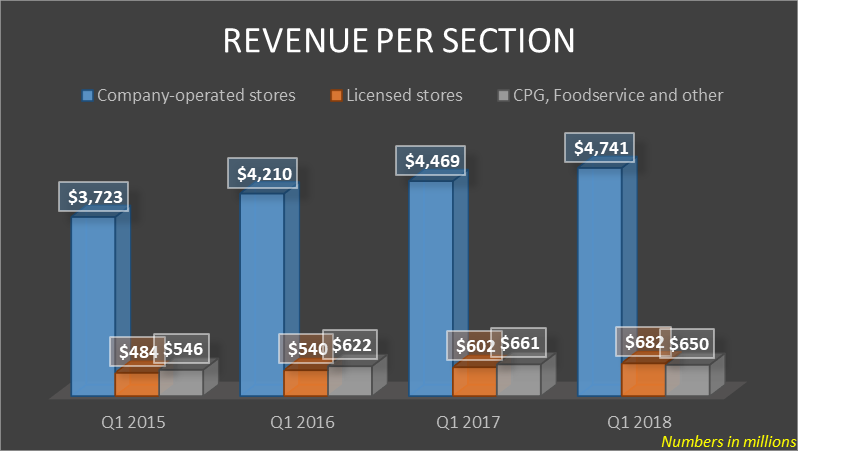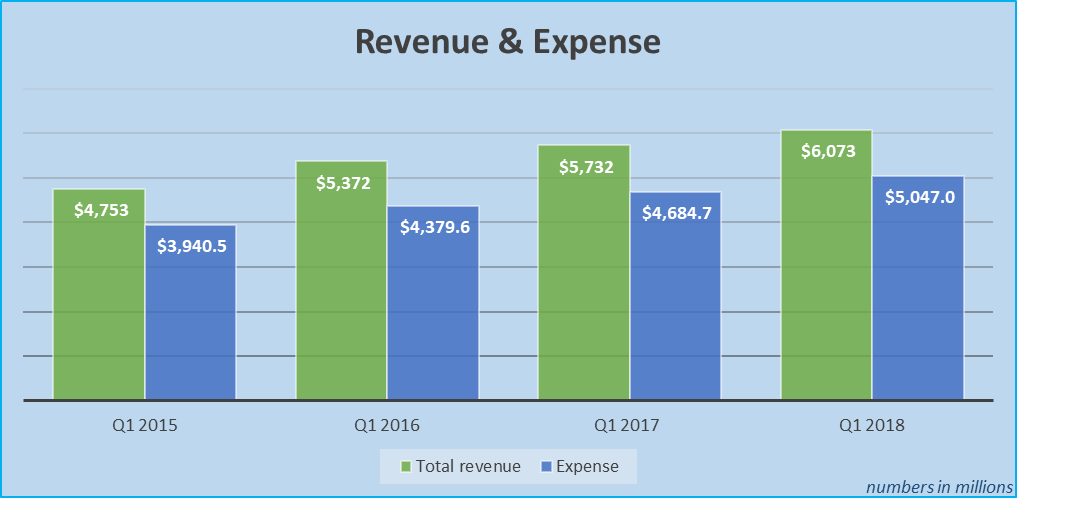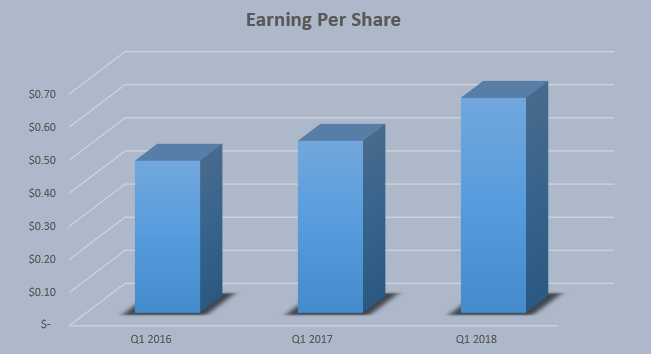Starbucks (Nasdaq: SBUX) shares have recently declined from a high of $61.70 to $54.50, an 11.5% drop, due to a couple of factors: The first one is the decline in comparable same-store sales, creating fear that the world’s biggest coffee chain is facing stagnant growth in its biggest market — the U.S & second, failure to retain occasional customers especially during the afternoon which translated into flat average transaction per store, a factor of surprise to the investors since it occurred during the holiday season. Does Starbucks have more room for growth or did it become an only dividend play? Let me discuss the reasons why we believe there is more room to grow:

Source: Google.
Top & bottom line
Total revenue Y-o-Y (Fiscal year ends in October) for Q1 2018 was $6.073 billion up from $5.733 billion, a 5.9% increase. Revenue per section came in as follows: company-operated stores revenue rose from $4.469 billion to $4.741. billion, a 6.1% increase while licensed stores revenue increased from $6.020 billion to $6.820 billion, a 13.3% increase. The only decrease came from CPG, foodservice and other, which declined from $6.61 billion to $6.49 billion, a 1.8% decrease.

Source: SEC filing, Chart created using Excel by author.
Expenses, on the other hand, increased by 8%, from $4.684 billion to $5.047 billion, and as a percentage of net revenue, it increased from 81.7% a year ago to 83.1%. This increase is due to a food-related mix shift in the Americas segment and restructuring costs related to the closing oTeavanna retail stores. Store operating expenses as a percentage of company-operated stores revenue decreased from 36.7% to 36.6%.

Source: SEC filing, chart created using Excel by author.
Finally, non-GAAP EPS grew 25% to $0.65 and included a $0.07 benefit from changes in the U.S. tax law. Another reason for this increase is the implementation of the buyback program by the company, purchasing 28.5 million shares equivalent to $1.6 billion the in 1st quarter 2018.

Source: SEC filing, chart created using Excel by author.
Growth prospects
The most commonly discussed issue between investors is the slowing momentum of comps sales in the U.S. and the saturation in terms of number of stores opened, as mentioned lately in a CNBC article:
“ Seventy-five percent of Starbucks locations in California (Starbucks’ largest U.S. market representing approximately 20 percent of its U.S. footprint) now have a store within a one-mile radius,” Strelzik said. “There are now 3.6 Starbucks locations within a one-mile radius of the typical Starbucks in the U.S. relative to 3.3 and 3.2 stores in 2014 and 2012 respectively.
Strong new store performance appears to be coming – at least in part – at the expense of existing store traffic. “









Leave A Comment